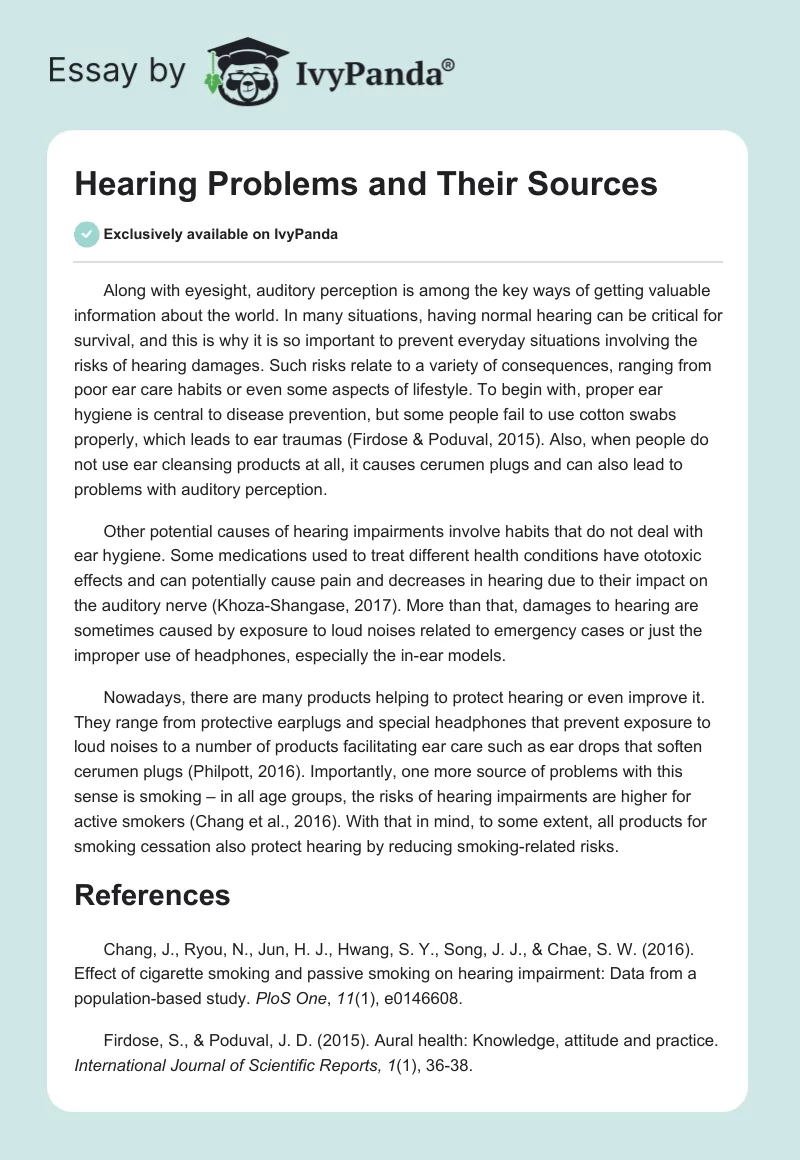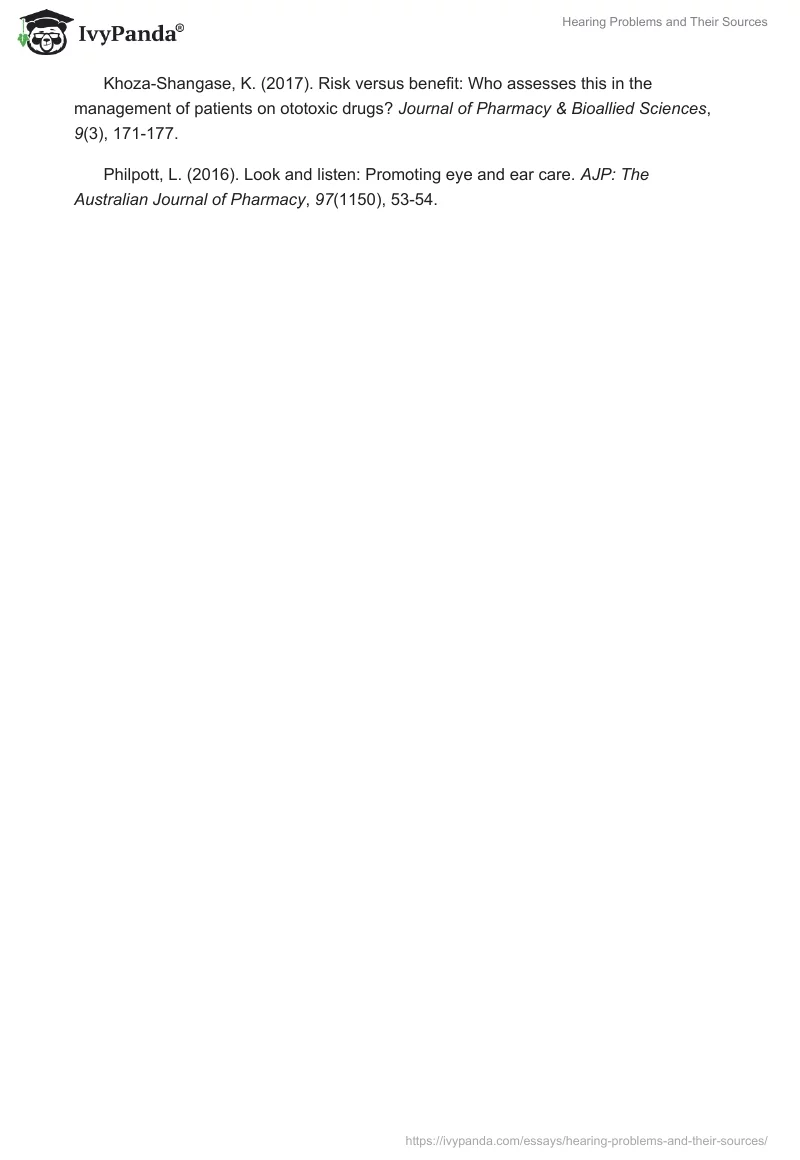Along with eyesight, auditory perception is among the key ways of getting valuable information about the world. In many situations, having normal hearing can be critical for survival, and this is why it is so important to prevent everyday situations involving the risks of hearing damages. Such risks relate to a variety of consequences, ranging from poor ear care habits or even some aspects of lifestyle. To begin with, proper ear hygiene is central to disease prevention, but some people fail to use cotton swabs properly, which leads to ear traumas (Firdose & Poduval, 2015). Also, when people do not use ear cleansing products at all, it causes cerumen plugs and can also lead to problems with auditory perception.
Other potential causes of hearing impairments involve habits that do not deal with ear hygiene. Some medications used to treat different health conditions have ototoxic effects and can potentially cause pain and decreases in hearing due to their impact on the auditory nerve (Khoza-Shangase, 2017). More than that, damages to hearing are sometimes caused by exposure to loud noises related to emergency cases or just the improper use of headphones, especially the in-ear models.
Nowadays, there are many products helping to protect hearing or even improve it. They range from protective earplugs and special headphones that prevent exposure to loud noises to a number of products facilitating ear care such as ear drops that soften cerumen plugs (Philpott, 2016). Importantly, one more source of problems with this sense is smoking – in all age groups, the risks of hearing impairments are higher for active smokers (Chang et al., 2016). With that in mind, to some extent, all products for smoking cessation also protect hearing by reducing smoking-related risks.
References
Chang, J., Ryou, N., Jun, H. J., Hwang, S. Y., Song, J. J., & Chae, S. W. (2016). Effect of cigarette smoking and passive smoking on hearing impairment: Data from a population-based study. PloS One, 11(1), e0146608.
Firdose, S., & Poduval, J. D. (2015). Aural health: Knowledge, attitude and practice. International Journal of Scientific Reports, 1(1), 36-38.
Khoza-Shangase, K. (2017). Risk versus benefit: Who assesses this in the management of patients on ototoxic drugs? Journal of Pharmacy & Bioallied Sciences, 9(3), 171-177.
Philpott, L. (2016). Look and listen: Promoting eye and ear care. AJP: The Australian Journal of Pharmacy, 97(1150), 53-54.


